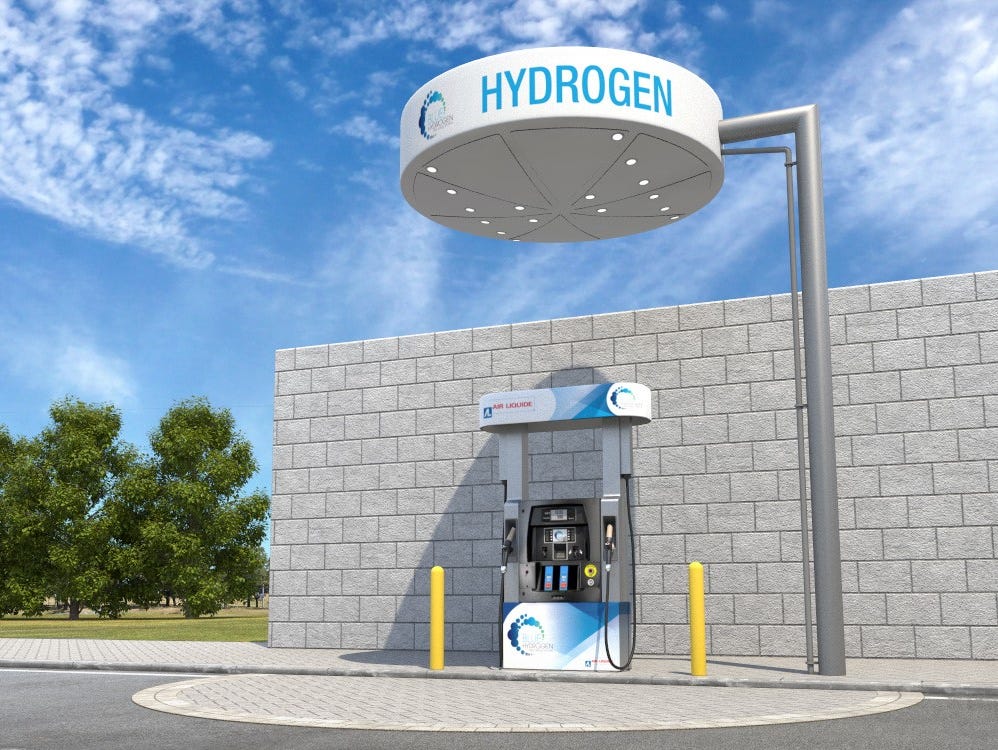

Millennium Reign Energy would like to thank the Glockner Dealership in Portsmouth and The Ohio State University for partnering with us to offer these new hydrogen fueling stations at their locations. Upon completion of another two hydrogen fueling stations, hydrogen vehicle owners will be able to travel anywhere in Ohio on hydrogen fuel. Other select participants will have an opportunity to test and provide feedback short term.Ī fourth leg of the Transcontinental Hydrogen Highway will soon be available in Canton Ohio. This “Ohio Hydrogen Triangle” test phase is expected to span approximately 12 months and will be limited to MRE staff and MRE partners for thorough analysis. We are building a network of multi-functional, onsite produced renewable hydrogen stations to deliver needed benefits to the renewable energy market today. Early test preparations have already presented a wait list of 22 hydrogen fuel vehicle owners that are signed up to be a part of the first Transcontinental Hydrogen Highway testing. We will demonstrate that hydrogen fueled vehicles are a wise investment that your conscience can approve of. The “Ohio Hydrogen Triangle” is to be an important testing and proving ground to show the world that hydrogen is not only beneficial for the environment, but also cost effective and convenient. This phase of the Transcontinental Hydrogen Highway consists of 3 out of 27 total planned hydrogen fueling stations, allowing quick refueling of hydrogen vehicles traveling in the area. U.S.Millennium Reign Energy (MRE) has been paving the way for zero emissions hydrogen! We are excited to announce the completion of the initial test leg of the Transcontinental Hydrogen Highway, connecting Dayton Ohio, Portsmouth Ohio and Columbus Ohio in a triangular corridor (“Ohio Hydrogen Triangle”).Projected global demand for hydrogen 2015-2050.Number of CNG/LNG cars on roads in Poland 2015-2018.Sales of BEV/PHEV vehicles in Poland 2017-2018, by model.Most popular hybrid cars in Poland 2019-2021, by model.Sales of low-carbon passenger cars in Poland 2013-2021, by buyer type.Number of petrol stations in Italy 2019, by region and type.consumption of natural gas fuel 1997-2018 E85 vis-a-vis regular gasoline retail fuel prices in the U.S.Daily fuel prices in Denmark 2020, by fuel type.More in This Section Infrastructure Development More on Hydrogen Fuel. Loading alternative fueling station locator. For Canadian stations in French, see Natural Resources Canada. Number of alternative fuel vehicles offered on U.S. Find hydrogen fueling stations in the United States and Canada.Alternative fuel vehicles makers: U.S.


Hydrogen industry's economic outlook in the EU 2030.Alternatively-fuelled vehicle registrations in the UK 2013-2016, by type.Global hydrogen production outlook by type 2015-2050.Hydrogen fueling stations cumulative number South Korea 2018-2030.Number of hydrogen fuel stations in the EU 2015-2021.Hydrogen stations worldwide by territory 2019.In addition to the product’s carbon intensity, according to a 2021 survey, the greatest global challenges with hydrogen technology were its complex distribution and inconsistent supply and storage issues. Most countries would produce highly carbon-intensive hydrogen if they used grid electricity. Only three countries in Europe met the EU Sustainable Taxonomy requirements for hydrogen production using national grid electricity. Not only does the technology need to advance, but in order for countries to meet their net zero targets, the necessary infrastructure needs to develop as well. The IEA forecast that by 2070, total demand could reach over 500 million metric tons, with the transportation sector expected to be the greatest hydrogen consumer. Global hydrogen demand totaled 71 million metric tons in 2019, with the refining sector being the major consumer. Hydrogen has proven to be one such alternative, especially for the transportation sector. By comparison, Germany was home to 91 hydrogen stations, with the number of hydrogen fueling stations in the European Union having significantly increased since 2018.įollowing the Paris Agreement, and more recently, the COP26, the world is seeking innovative technologies to replace fossil fuels and reduce greenhouse gas emissions. Japan's position as the leading provider of hydrogen automotive fuel is unsurprising given that Japanese automakers Toyota and Honda are among only three car manufacturers in the world selling hydrogen cars to the public. As of September 2021, there were 154 operational hydrogen refueling stations in the country. Japan has the greatest number of hydrogen fuel stations of any country worldwide.


 0 kommentar(er)
0 kommentar(er)
